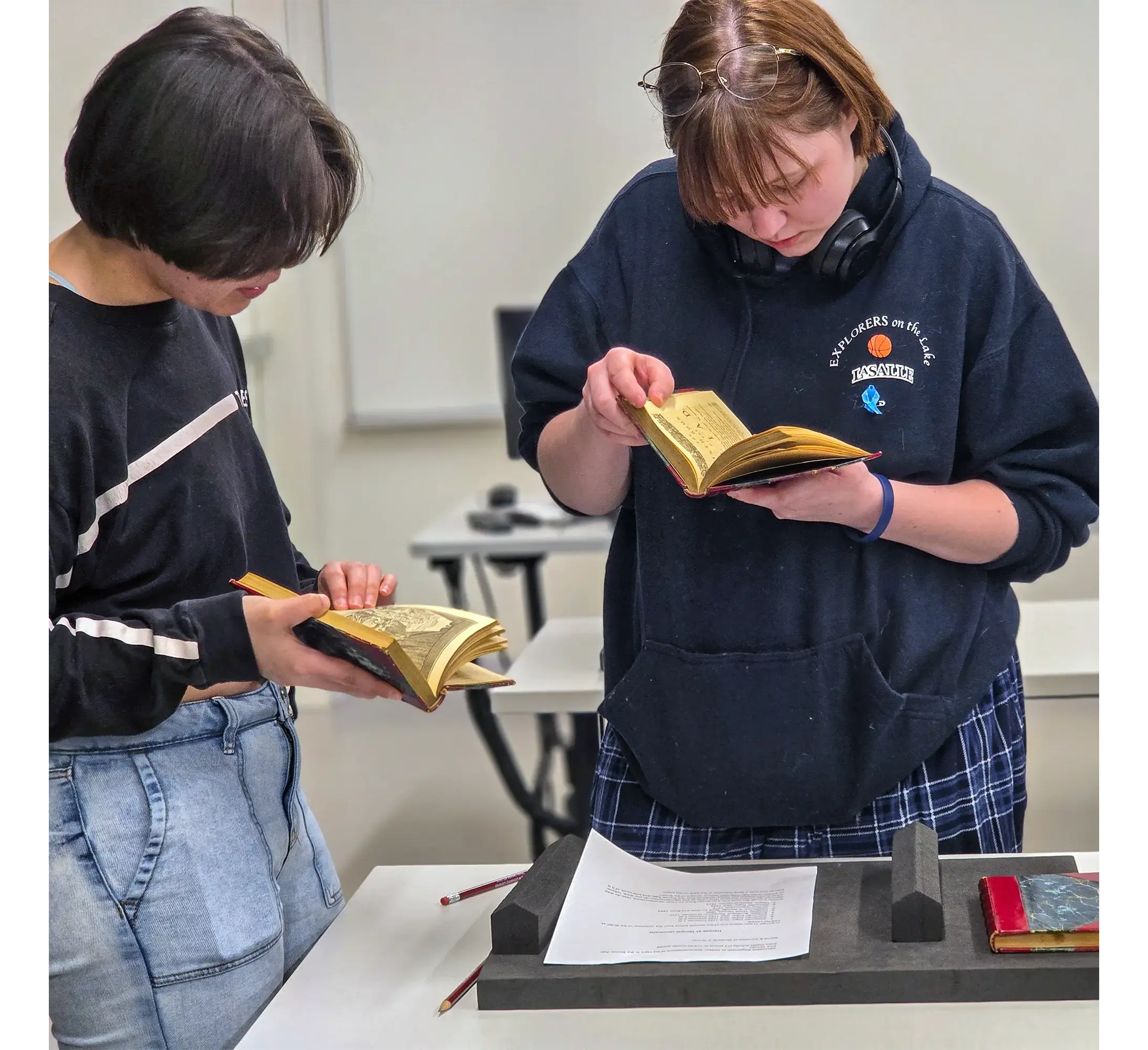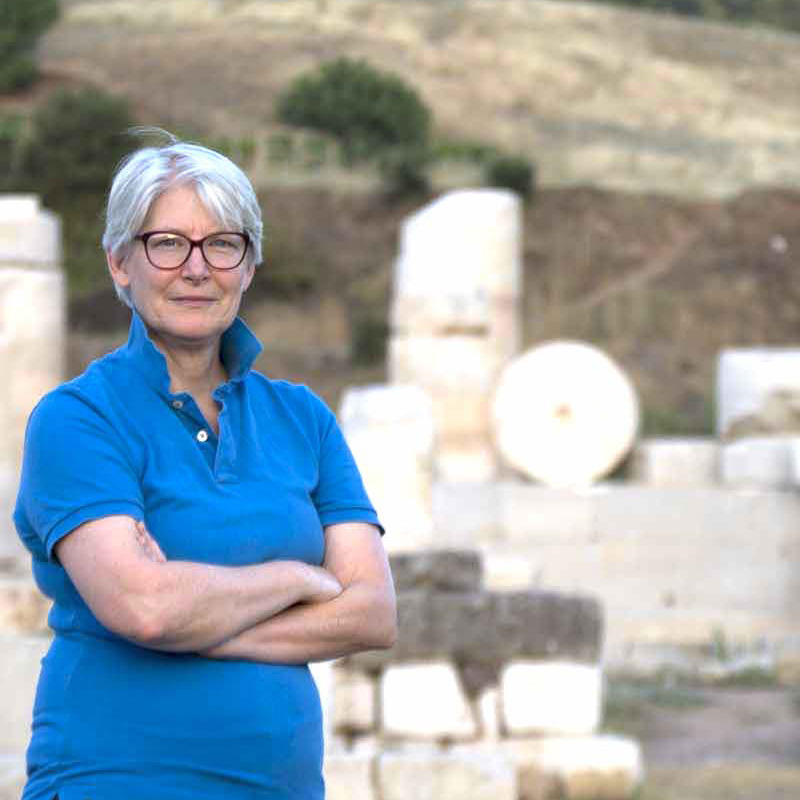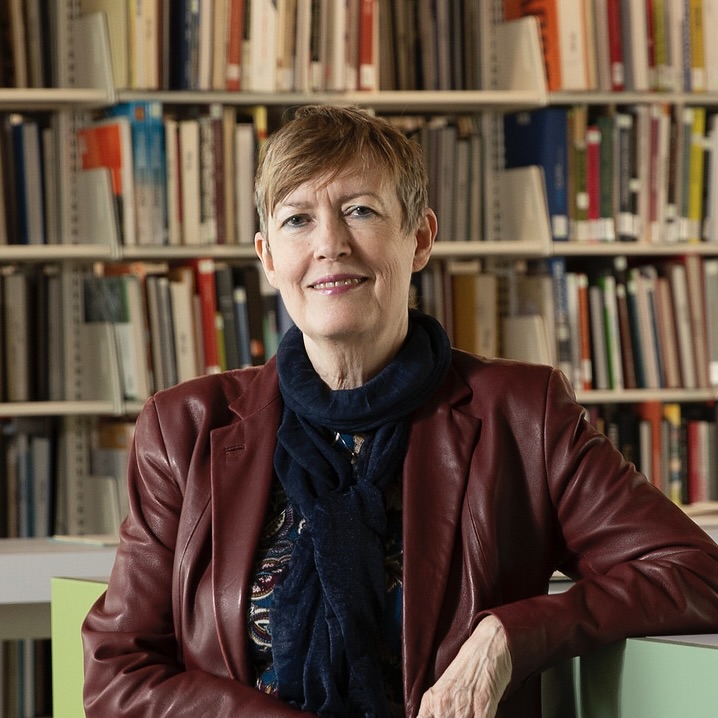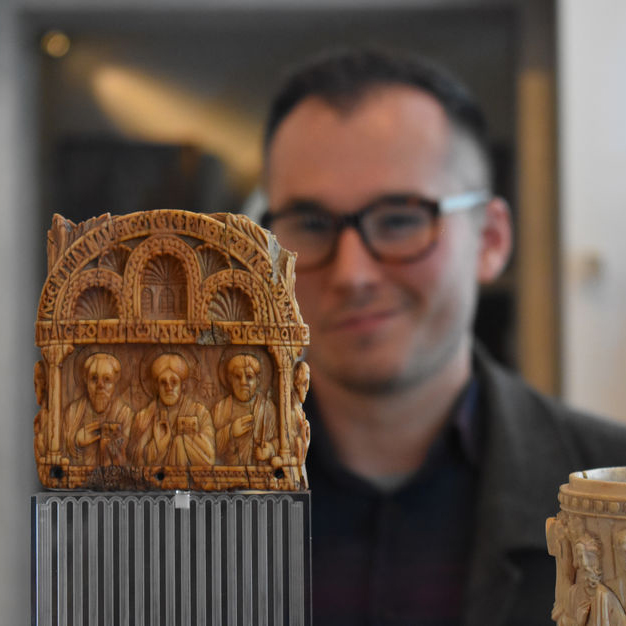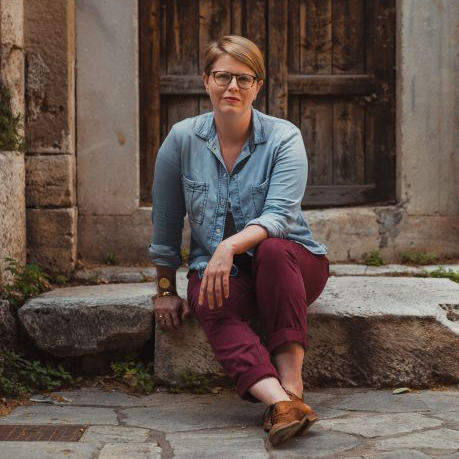Bachelor’s Degree in Art History
Fundamentally, the study of art history requires you to look closely at the art, material, and methods. Then, you learn to think critically about what you see and then conduct research to build historical context. The combination of these skills helps you understand and explain interpretations of each piece.
5 Reasons to Study at Tyler
Studying art history at the Tyler School of Art and Architecture comes with many benefits:
- Immerse yourself within the community and resources available at one of the top art and design schools in the country, including the chance to study abroad in Rome and Tokyo.
- Connect with the art and culture in field trips and individual study of the historic and vibrant city of Philadelphia and the wider region, stretching from Washington, DC, to New York City.
- Earn your degree using the many resources of Temple University, a public, R1 research university, while engaging in interdisciplinary study.
- Tap into the vast and diverse expertise of our accomplished faculty in smaller classes, where you can truly connect with others and with art.
- Learn through assignments that challenge your critical thinking and that build your knowledge and confidence for what comes next in your chosen career.
Inclusive and Global Perspectives
When you study art history at the Tyler School of Art and Architecture, your education focuses on understanding art and visual culture from an inclusive and global perspective.
Through classroom experiences and encounters with art in museums, galleries and public spaces, you learn to focus on the materials, processes, and technologies of how art gets made. You also learn to analyze the works through more perspectives than your own.
Tyler’s art history faculty promotes the study of global art and cultures, from antiquity to present. You learn to use modes of analysis across regional, national and cultural boundaries.
Your professors guide your exploration of the intersection of art history with race, gender and other lived experiences. Choose Tyler and open your mind to a greater understanding of art and visual culture by stepping away from Eurocentric points of view.
Throughout your studies, Tyler integrates the history of art with both liberal arts and studio arts practices for a greater understanding of how to research, analyze and communicate about global art and cultures.
Major in Art History
The art history major is a broad-based curriculum with a minimum of prerequisites, allowing you to have the flexibility to pursue a minor or even a double major at Temple.

- Bring your curiosity and compassion about what’s happening in the world and how that gets expressed in art of the past and of today.
- Learn to understand and to tell the stories of artists and their works.
- Hone your critical-thinking skills and discover ways to collaborate with and lead public-facing institutions.
- Develop your research and writing skills.
- Learn transferable skills and professionalism that make you an asset in any career you choose.
Minor in Art History
Take advantage of a wide range of courses to construct a minor in art history.
Resources for Art History Majors
Tyler understands your need to do real things and make a real difference. We hope you feel excited to conduct individualized research with faculty members and to gain practical experience, working as an intern at regional museums, galleries, and other arts institutions. Let’s look at those details and your potential art history career options.
As an R1 research university, Temple University in conjunction with the Tyler School of Art and Architecture gets you access to research funding. Here are a few examples:
Livingstone Undergraduate Research Awards
Broad Street Finish Line for First-Generation College Students
Creative Arts, Research and Scholarship (CARAS) Program
Tyler School of Art and Architecture, Merit-based Scholarships and Honors
James F. DeRose Prize for an Undergraduate Art History Major (contact the Undergraduate Advisor)
Tyler gives you the chance to add hands-on experience to your education — and your resumé — via art history internships in the mid-Atlantic region and beyond. Internships help you explore career opportunities as an art history major and to see which ones fit best for you. Here are some examples of places our students do internships:
- Aspen Institute
- Barnes Foundation
- Brandywine River Museum of Art
- Center for Emerging Arts
- Monument Lab
- Rosenbach Museum and Library
- Temple Diamond Peer Teachers
- University of Pennsylvania Museum of Archaeology and Anthropology
Tyler’s art history alumni work in a wide variety of careers in the art world and beyond. Some work at non-profit organizations. Some pursue careers at museums, galleries, libraries, auction houses and publishers. Some work entirely outside the art world. Some also get into competitive arts-related graduate programs such as Africology, art history, architecture, art therapy, costume studies, library science and museum studies.
With the skills you gain in critical reading, writing, thinking and visual analysis, you graduate prepared for a wide variety of fields, not only those related to the arts:
- Business Development Analyst
- Customer Development Specialist
- Fundraising
- Educational Programming
- Gallery Manager
- Curatorial Intern
- Art Sales Manager
- Nonprofit Program & Events Coordinator
- Pastry Chef
- Social Media Coordinator
Meet the Faculty
Meet the award-winning faculty who teach in Tyler’s undergraduate and graduate degrees in art history.

